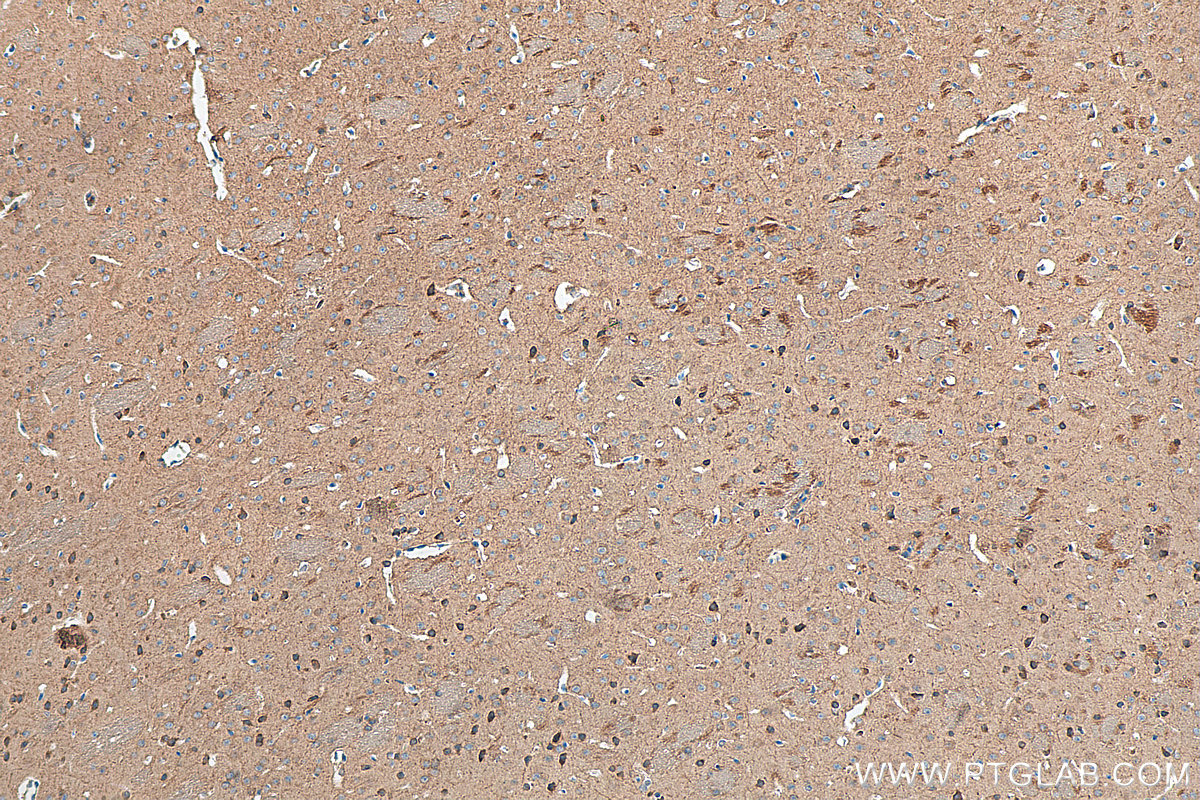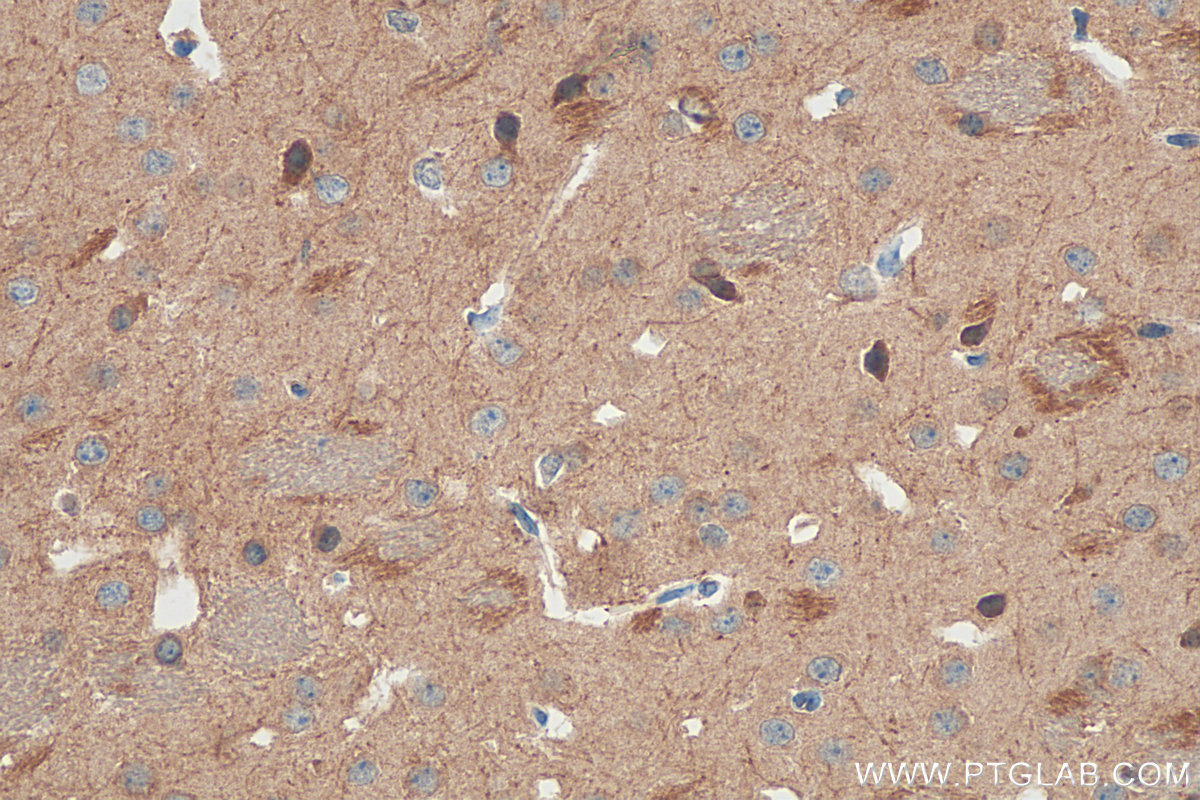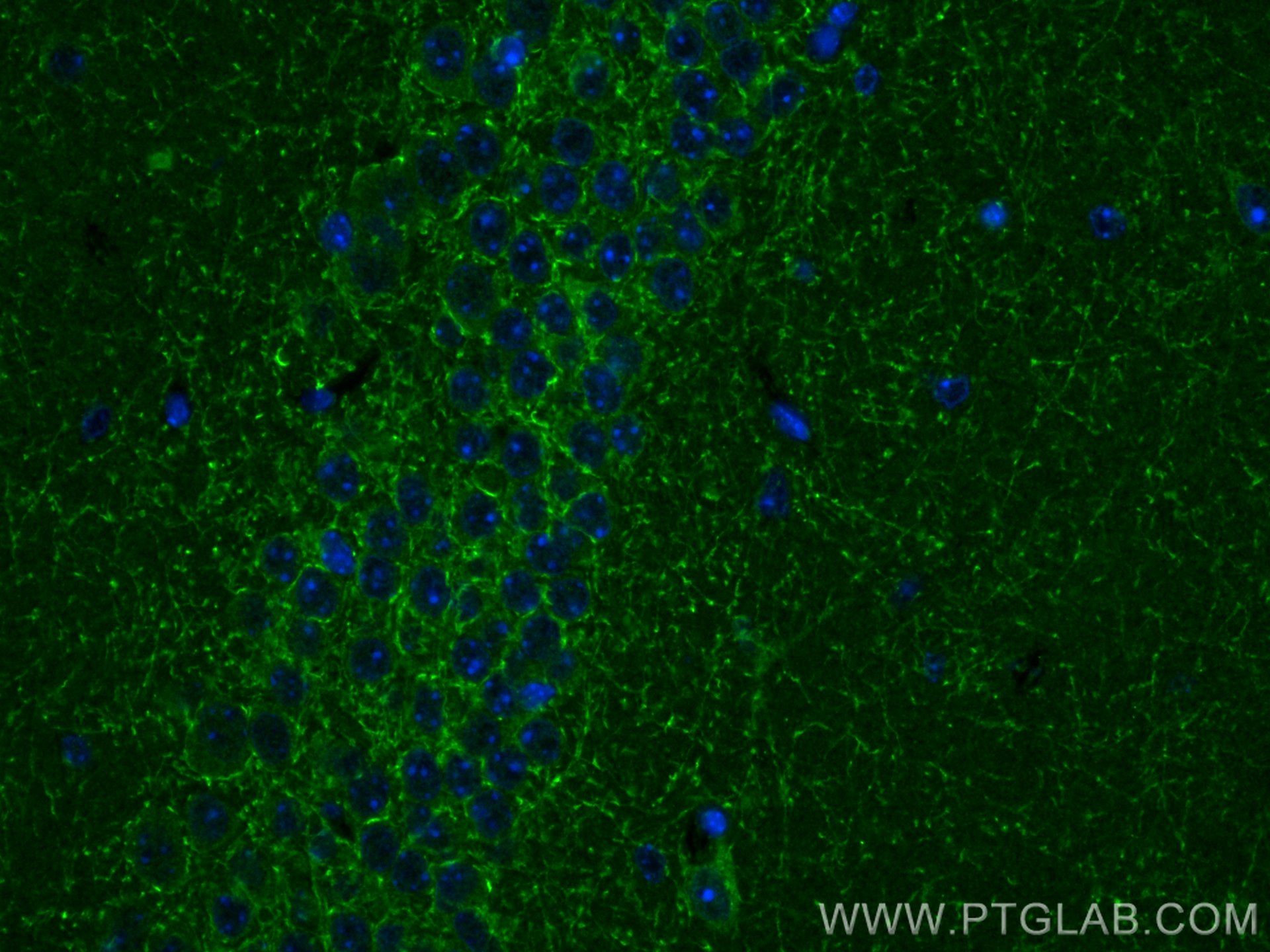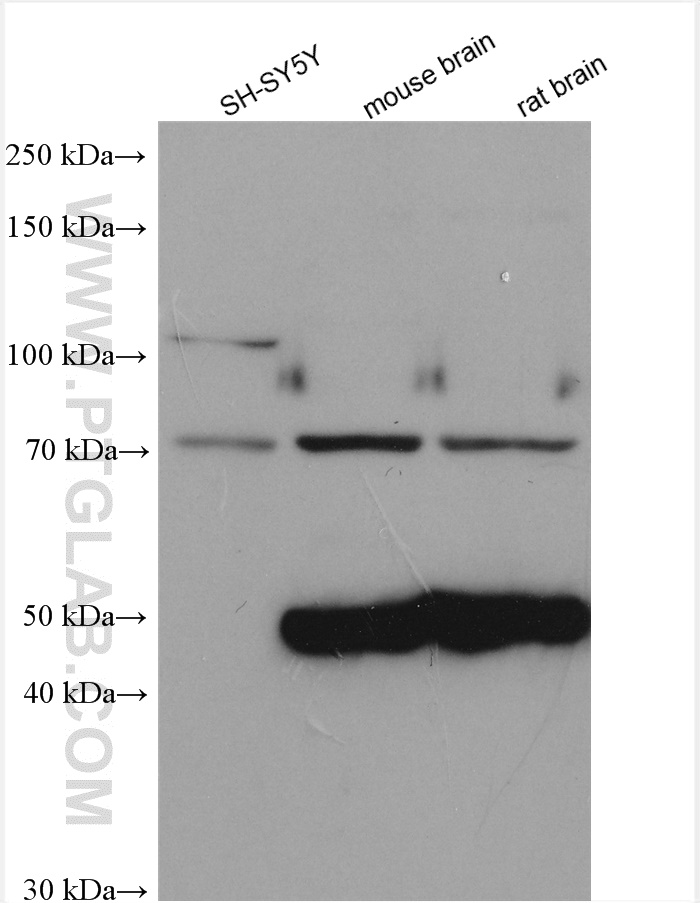验证数据展示
经过测试的应用
| Positive WB detected in | SH-SY5Y cells, mouse brain tissue, rat brain tissue |
| Positive IHC detected in | mouse brain tissue Note: suggested antigen retrieval with TE buffer pH 9.0; (*) Alternatively, antigen retrieval may be performed with citrate buffer pH 6.0 |
| Positive IF-P detected in | mouse brain tissue |
推荐稀释比
| 应用 | 推荐稀释比 |
|---|---|
| Western Blot (WB) | WB : 1:1000-1:4000 |
| Immunohistochemistry (IHC) | IHC : 1:200-1:800 |
| Immunofluorescence (IF)-P | IF-P : 1:50-1:500 |
| It is recommended that this reagent should be titrated in each testing system to obtain optimal results. | |
| Sample-dependent, Check data in validation data gallery. | |
产品信息
17978-1-AP targets Cannabinoid receptor 1 in WB, IHC, IF-P, ELISA applications and shows reactivity with human, mouse, rat samples.
| 经测试应用 | WB, IHC, IF-P, ELISA Application Description |
| 文献引用应用 | WB, IHC, IF |
| 经测试反应性 | human, mouse, rat |
| 文献引用反应性 | human, mouse, rat |
| 免疫原 |
CatNo: Ag12371 Product name: Recombinant human CNR1 protein Source: e coli.-derived, PGEX-4T Tag: GST Domain: 1-121 aa of BC074812 Sequence: MKSILDGLADTTFRTITTDLLYVGSNDIQYEDIKGDMASKLGYFPQKFPLTSFRGSPFQEKMTAGDNPQLVPADQVNITEFYNKSLSSFKENEENIQCGENFMDIECFMVLNPSQQLAIAV 种属同源性预测 |
| 宿主/亚型 | Rabbit / IgG |
| 抗体类别 | Polyclonal |
| 产品类型 | Antibody |
| 全称 | cannabinoid receptor 1 (brain) |
| 别名 | CNR1, CANN6, cannabinoid receptor 1 (brain), CB R, CB1 |
| 计算分子量 | 472 aa, 53 kDa |
| 观测分子量 | 45 kDa, 66 kDa |
| GenBank蛋白编号 | BC074812 |
| 基因名称 | Cannabinoid receptor 1 |
| Gene ID (NCBI) | 1268 |
| RRID | AB_10859098 |
| 偶联类型 | Unconjugated |
| 形式 | Liquid |
| 纯化方式 | Antigen affinity purification |
| UNIPROT ID | P21554 |
| 储存缓冲液 | PBS with 0.02% sodium azide and 50% glycerol, pH 7.3. |
| 储存条件 | Store at -20°C. Stable for one year after shipment. Aliquoting is unnecessary for -20oC storage. |
背景介绍
Cannabinoid receptor 1 (CNR1, or CB1) and CNR2 (CB2) are members of the guanine-nucleotide-binding protein (G-protein) coupled receptor family. The CB1 receptor is expressed mainly in the brain. The CB2 receptor is expressed mainly in the immune system and in hematopoietic cells. The two receptors have been found to be involved in the cannabinoid-induced CNS effects (including alterations in mood and cognition) experienced by users of marijuana.
实验方案
| Product Specific Protocols | |
|---|---|
| IF protocol for Cannabinoid receptor 1 antibody 17978-1-AP | Download protocol |
| IHC protocol for Cannabinoid receptor 1 antibody 17978-1-AP | Download protocol |
| WB protocol for Cannabinoid receptor 1 antibody 17978-1-AP | Download protocol |
| Standard Protocols | |
|---|---|
| Click here to view our Standard Protocols |
发表文章
| Species | Application | Title |
|---|---|---|
Elife p21-activated kinase 1 restricts tonic endocannabinoid signaling in the hippocampus. | ||
Transl Psychiatry Deletion of Fgf14 confers resilience to basal and stress-induced depressive-like behavior and reduces anxiety in mice | ||
Chin Med Electroacupuncture repairs intestinal barrier by upregulating CB1 through gut microbiota in DSS-induced acute colitis | ||
Neuropharmacology Δ9-tetrahydrocannabinol induces blood-brain barrier disruption: Involving the activation of CB1R and oxidative stress | ||
Hum Mol Genet BDNF overexpression prevents cognitive deficit elicited by adolescent cannabis exposure and host susceptibility interaction. | ||
Phytomedicine Endocannabinoid signalling/cannabinoid receptor 2 is involved in icariin-mediated protective effects against bleomycin-induced pulmonary fibrosis. |







